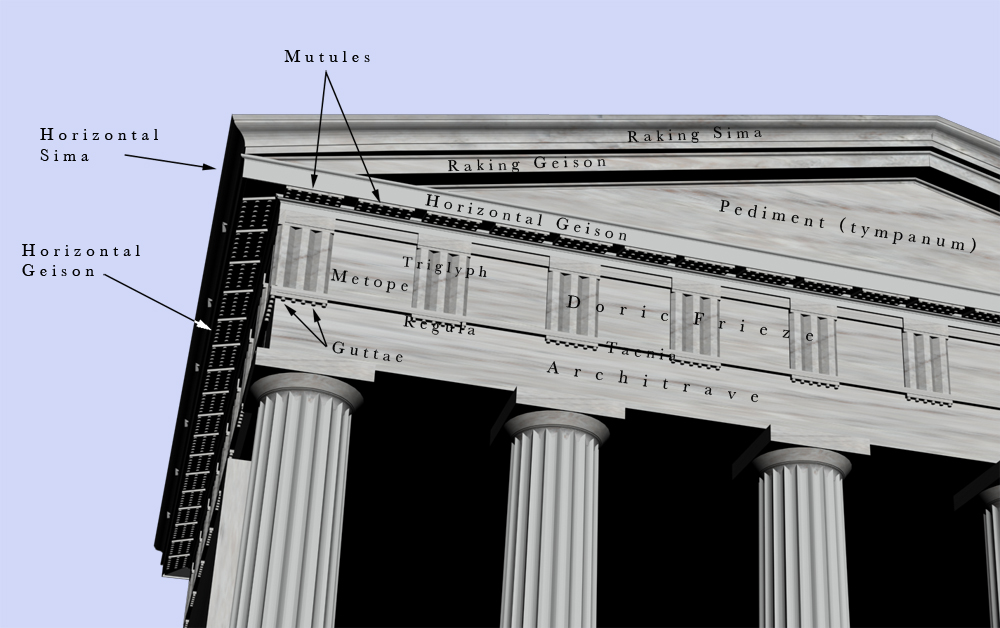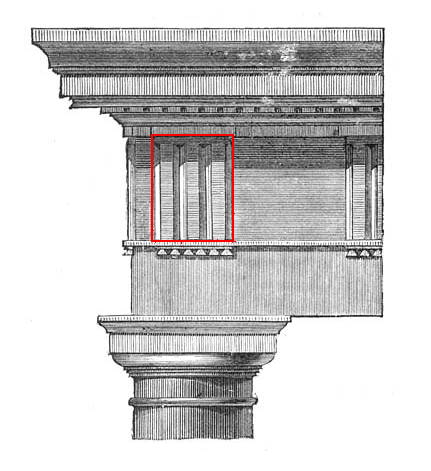|
Charles W. Goodyear House
The Charles W. Goodyear House is located at 888 Delaware Avenue in Buffalo, New York, part of the Delaware Avenue Historic District, a federally designated historic district listed on the National Register of Historic Places since 1974. The Châteauesque house was designed by prominent Buffalo architect Edward Green, of the Buffalo architecture firm Green & Wicks, and was completed in 1903 at a cost of $500,000 (). The home was built for Charles and Ella Goodyear. Goodyear was a founder and head of several companies including the Buffalo and Susquehanna Railroad, Great Southern Lumber Company, and the New Orleans Great Northern Railroad Company, as well as a director of Marine National Bank, and General Railway Signal. House Exterior The exterior of the two and a half story house is brick trimmed with stone. The mansard roof includes a row of dormers with pedimented tops with a festooned motif that runs along the roofline above a dentilled cornice. The principal entranc ... [...More Info...] [...Related Items...] OR: [Wikipedia] [Google] [Baidu] |
Châteauesque
Châteauesque (or Francis I style,Whiffen, Marcus, ''American Architecture Since 1780: A guide to the styles'', The MIT Press, Cambridge, MA, 1969, p. 142. or in Canada, the Château Style) is a Revivalist architectural style based on the French Renaissance architecture of the monumental châteaux of the Loire Valley from the late fifteenth century to the early seventeenth century. The term ''châteauesque'' (literally, "château-like") is credited (by historian Marcus Whiffen) to American architectural historian Bainbridge Bunting, although it can be found in publications that pre-date Bunting's birth. As of 2011, the Getty Research Institute's ''Art & Architecture Thesaurus'' includes both "Château Style" and "Châteauesque", with the former being the preferred term for North America. The style frequently features buildings heavily ornamented by the elaborate towers, spires, and steeply-pitched roofs of sixteenth century châteaux, themselves influenced by late Gothic and ... [...More Info...] [...Related Items...] OR: [Wikipedia] [Google] [Baidu] |
Pediment
Pediments are gables, usually of a triangular shape. Pediments are placed above the horizontal structure of the lintel, or entablature, if supported by columns. Pediments can contain an overdoor and are usually topped by hood moulds. A pediment is sometimes the top element of a portico. For symmetric designs, it provides a center point and is often used to add grandness to entrances. The tympanum, the triangular area within the pediment, is often decorated with a pedimental sculpture which may be freestanding or a relief sculpture. The tympanum may hold an inscription, or in modern times, a clock face. Pediments are found in ancient Greek architecture as early as 600 BC (e.g. the archaic Temple of Artemis). Variations of the pediment occur in later architectural styles such as Classical, Neoclassical and Baroque. Gable roofs were common in ancient Greek temples with a low pitch (angle of 12.5° to 16°). History The pediment is found in classical Greek temples, Et ... [...More Info...] [...Related Items...] OR: [Wikipedia] [Google] [Baidu] |
Swietenia Humilis
''Swietenia humilis'' is a species of tree in the family Meliaceae. It is one of three species in the genus ''Swietenia'', all three of which are regarded as "genuine mahogany." At , it is one-fifth the height of ''S. mahagoni'' and one-sixth the height of ''S. macrophylla''. Its species name, ''humilis'', means "small" or "dwarfish". Common names include Pacific Coast mahogany, ''caoba del Pacifico'', ''caoba del Honduras'', ''caobilla'', ''cobano'', ''gateado'', ''sopilocuahuilt'', ''venadillo'' and ''zapaton''. In the wood trades it is known as Honduras mahogany and Mexican mahogany The tree has been over-exploited for its wood which is valuable for making furniture. The plant also is of interest as a possibly commercial source of seed oil and pharmacologically active compounds. Distribution and habitat It is found in the drier zones of the western Sierra Madre mountain range from Mexico through Guatemala, Belize, Honduras, and El Salvador. The distribution in Guatemala and ... [...More Info...] [...Related Items...] OR: [Wikipedia] [Google] [Baidu] |
Campanula Americana
''Campanula americana'', the American bellflower, or tall bellflower, is a bellflower native to eastern North America. Tall bellflowers can be annual or biennial with a varying life-history with seeds germinating in the fall producing annual plants and spring-germinating seeds producing biennial plants. Long-tongued bees are the primary pollinators, including ''Megachile campanulae,'' but halictid bees, butterflies, and skippers may also act as pollinators. Tall Bellflowers do not generally self-pollinate. Some authorities, including the USDA PLANTS database, consider the name ''Campanulastrum americanum'' to be the accepted name for this species. Description Morphology A large central flower stem shoots up from a basal rosette, that terminates in a raceme 1/2-2' long, with the plant's overall height being 3-6'. The central stem is light green, slightly grooved, and hairy. The primary root system is a taproot. It has alternate leaves 3-6" in length, that are lance-shaped ... [...More Info...] [...Related Items...] OR: [Wikipedia] [Google] [Baidu] |
Frieze
In architecture, the frieze is the wide central section part of an entablature and may be plain in the Ionic or Doric order, or decorated with bas-reliefs. Paterae are also usually used to decorate friezes. Even when neither columns nor pilasters are expressed, on an astylar wall it lies upon the architrave ("main beam") and is capped by the moldings of the cornice. A frieze can be found on many Greek and Roman buildings, the Parthenon Frieze being the most famous, and perhaps the most elaborate. This style is typical for the Persians. In interiors, the frieze of a room is the section of wall above the picture rail and under the crown moldings or cornice. By extension, a frieze is a long stretch of painted, sculpted or even calligraphic decoration in such a position, normally above eye-level. Frieze decorations may depict scenes in a sequence of discrete panels. The material of which the frieze is made of may be plasterwork, carved wood or other decorative medium. ... [...More Info...] [...Related Items...] OR: [Wikipedia] [Google] [Baidu] |
Guttae
A gutta (Latin pl. guttae, "drops") is a small water-repelling, cone-shaped projection used near the top of the architrave of the Doric order in classical architecture. At the top of the architrave blocks, a row of six ''guttae'' below the narrow projection of the taenia (fillet) formed an element called a regula. A ''regula'' was aligned under each triglyph of the Doric frieze. In addition, the underside of the projecting geison above the frieze had rectangular protrusions termed ''mutules'' that each had three rows of six ''guttae''. These mutules were aligned above each triglyph and each metope. It is thought that the guttae were a skeuomorphic representation of the pegs used in the construction of the wooden structures that preceded the familiar Greek architecture in stone. However, they have some functionality, as water drips over the edges, away from the edge of the building. Outside the Doric In the strict tradition of classical architecture, a set of guttae always ... [...More Info...] [...Related Items...] OR: [Wikipedia] [Google] [Baidu] |
Triglyph
Triglyph is an architectural term for the vertically channeled tablets of the Doric frieze in classical architecture, so called because of the angular channels in them. The rectangular recessed spaces between the triglyphs on a Doric frieze are called metopes. The raised spaces between the channels themselves (within a triglyph) are called ''femur'' in Latin or ''meros'' in Greek. In the strict tradition of classical architecture, a set of guttae, the six triangular "pegs" below, always go with a triglyph above (and vice versa), and the pair of features are only found in entablatures of buildings using the Doric order. The absence of the pair effectively converts a building from being in the Doric order to being in the Tuscan order. The triglyph is largely thought to be a tectonic and skeuomorphic representation in stone of the wooden beam ends of the typical primitive hut, as described by Vitruvius and Renaissance writers. The wooden beams were notched in three separate plac ... [...More Info...] [...Related Items...] OR: [Wikipedia] [Google] [Baidu] |
Stained Glass
Stained glass is coloured glass as a material or works created from it. Throughout its thousand-year history, the term has been applied almost exclusively to the windows of churches and other significant religious buildings. Although traditionally made in flat panels and used as windows, the creations of modern stained glass artists also include three-dimensional structures and sculpture. Modern vernacular usage has often extended the term "stained glass" to include domestic lead light and ''objets d'art'' created from foil glasswork exemplified in the famous lamps of Louis Comfort Tiffany. As a material ''stained glass'' is glass that has been coloured by adding metallic salts during its manufacture, and usually then further decorating it in various ways. The coloured glass is crafted into ''stained glass windows'' in which small pieces of glass are arranged to form patterns or pictures, held together (traditionally) by strips of lead and supported by a rigid frame. Painte ... [...More Info...] [...Related Items...] OR: [Wikipedia] [Google] [Baidu] |
Saint Louis Exposition
The Saint Louis Exposition or St. Louis Expo was a series of annual agricultural and technical fairs held in St. Louis' Fairgrounds Park, from the 1850s to 1902. In 1904, the Louisiana Purchase Exposition, a major World's Fair, was held in St. Louis, Missouri. The annual agricultural/technical exposition was not held in 1903-4, and ceased after the World's Fair. Memorabilia from the annual St. Louis Expositions are sometimes confused with 1904 World's Fair memorabilia on auction websites. History In 1855 a group of St. Louisans founded the "St. Louis Agricultural and Mechanical Association," which held annual fairs starting in 1856. Prominent citizens founded the association, which was not intended to pay dividends. All profits were to expand and beautify the fairgrounds. A site of at the northwest corner of Grand Avenue and the Natural Bridge Plank Road was purchased by the Association. It was well outside the city limits—an hour's journey from the city by horse-drawn car ... [...More Info...] [...Related Items...] OR: [Wikipedia] [Google] [Baidu] |
Karl Bitter
Karl Theodore Francis Bitter (December 6, 1867 – April 9, 1915) was an Austrian-born American sculptor best known for his architectural sculpture, memorials and residential work. Life and career The son of Carl and Henrietta Bitter, he was born in the municipal district Rudolfsheim-Fünfhaus of Vienna. His early training took place at the Vienna ''Kunstgewerbeschule'' (the imperial school for the applied arts), and after that at the ''Kunstakademie'' (the Academy of Fine Arts). At the Academy, he studied with August Kühne and Edmund Heller. Upon his graduation, he was apprenticed to an architectural sculptor,. This was the period that the ''Ringstraße'' was being built in Vienna, and a large number of decorated buildings were being built. He was drafted into the Austrian Army, and deserted while on leave. He was unable to return to Austria for many years because of his desertion. He later was pardoned by Emperor Franz Josef of Austria, who hoped to lure the famous sculpt ... [...More Info...] [...Related Items...] OR: [Wikipedia] [Google] [Baidu] |
Juglans
Walnut trees are any species of tree in the plant genus ''Juglans'', the type genus of the family Juglandaceae, the seeds of which are referred to as walnuts. All species are deciduous trees, tall, with pinnate leaves , with 5–25 leaflets; the shoots have chambered pith, a character shared with the wingnuts (''Pterocarya''), but not the hickories (''Carya'') in the same family. The 21 species in the genus range across the north temperate Old World from southeast Europe east to Japan, and more widely in the New World from southeast Canada west to California and south to Argentina. Edible walnuts, which are consumed worldwide, are usually harvested from cultivated varieties of the species ''Juglans regia''. China produces half of the world total of walnuts. Etymology The common name ''walnut'' derives from Old English ''wealhhnutu'', literally 'foreign nut' (from ''wealh'' 'foreign' + ''hnutu'' 'nut'), because it was introduced from Gaul and Italy. The Latin name for the wal ... [...More Info...] [...Related Items...] OR: [Wikipedia] [Google] [Baidu] |
Molding (decorative)
Moulding (spelled molding in the United States), or coving (in United Kingdom, Australia), is a strip of material with various profiles used to cover transitions between surfaces or for decoration. It is traditionally made from solid milled wood or plaster, but may be of plastic or reformed wood. In classical architecture and sculpture, the moulding is often carved in marble or other stones. A "plain" moulding has right-angled upper and lower edges. A "sprung" moulding has upper and lower edges that bevel towards its rear, allowing mounting between two non-parallel planes (such as a wall and a ceiling), with an open space behind. Mouldings may be decorated with paterae as long, uninterrupted elements may be boring for eyes. Types Decorative mouldings have been made of wood, stone and cement. Recently mouldings have been made of extruded PVC and Expanded Polystyrene (EPS) as a core with a cement-based protective coating. Synthetic mouldings are a cost-effective alternative ... [...More Info...] [...Related Items...] OR: [Wikipedia] [Google] [Baidu] |









.jpg)
